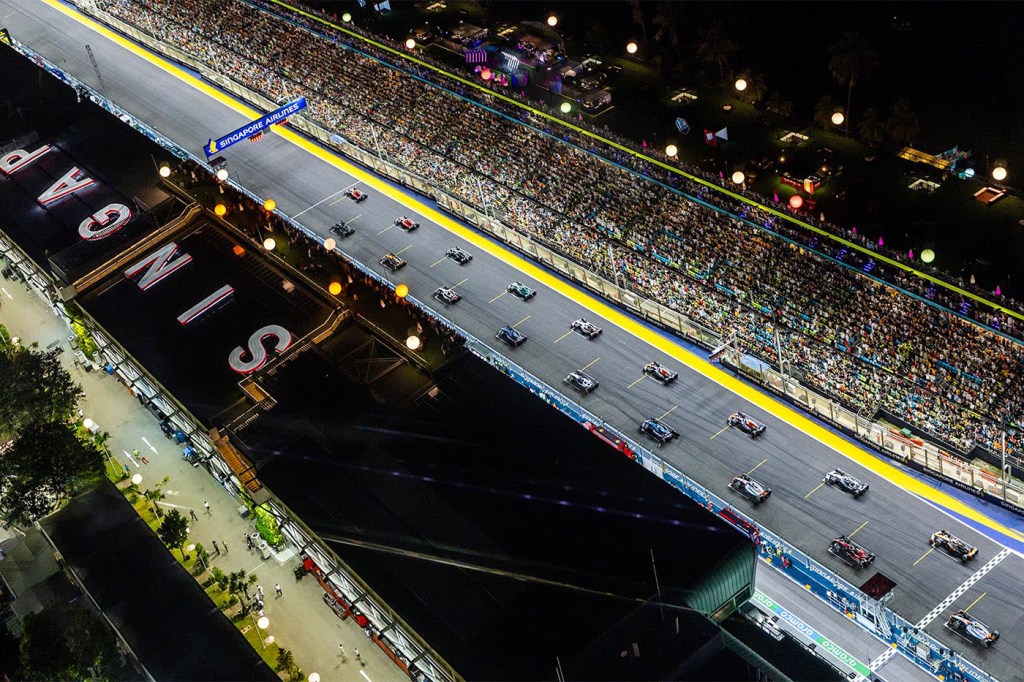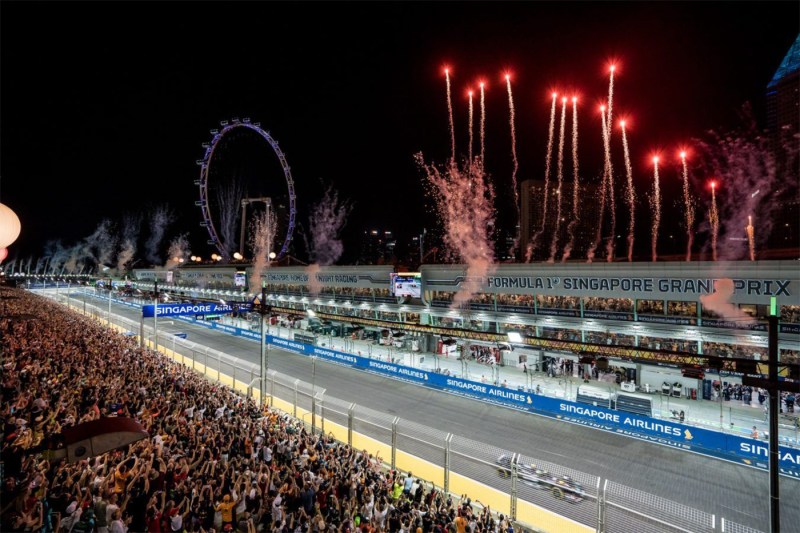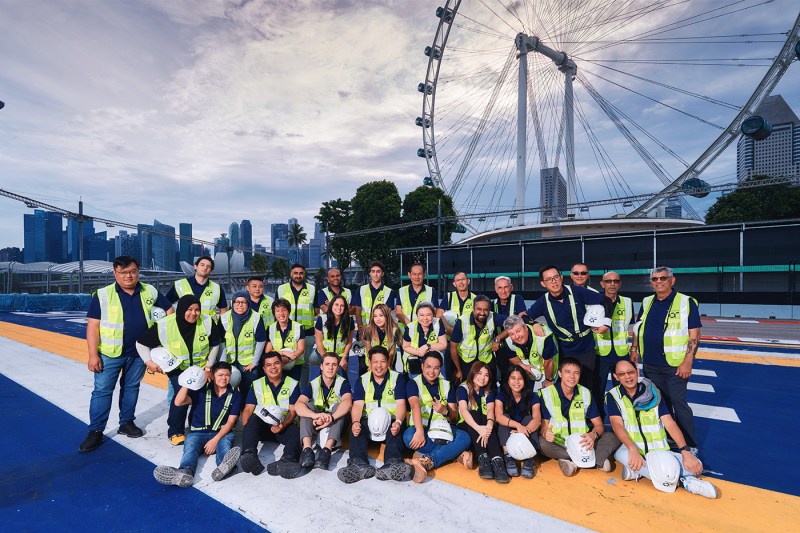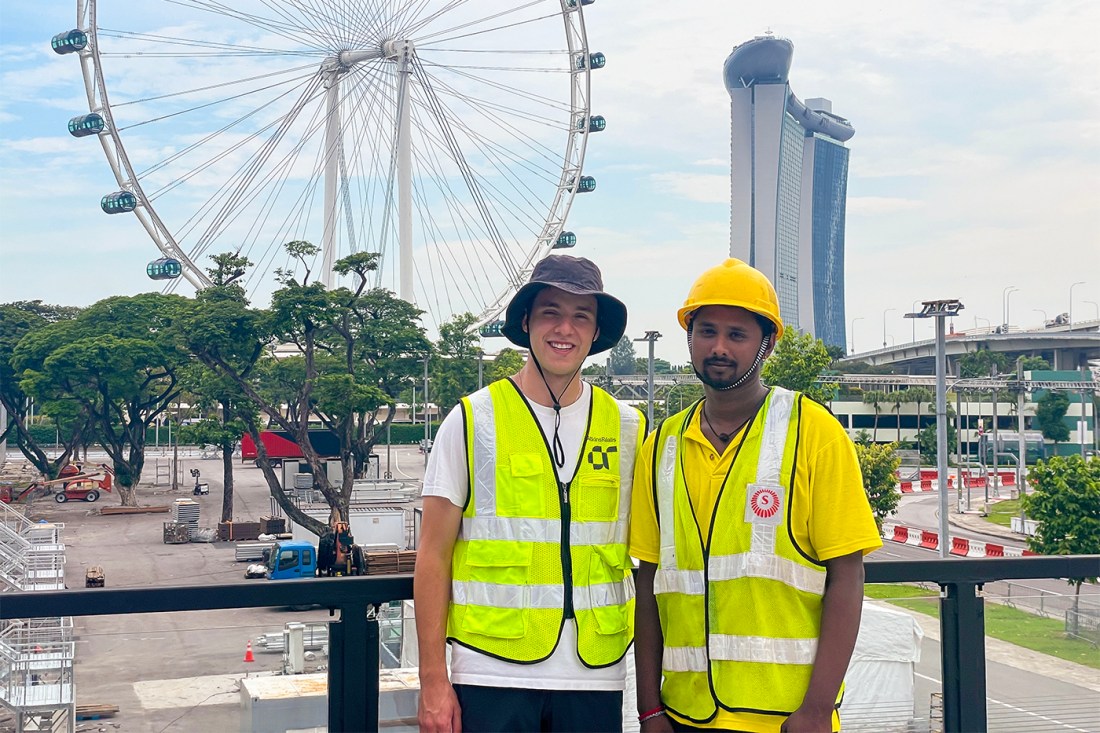This supercharged Northeastern co-op helped construct the Formula 1 racetrack for the Singapore Grand Prix

About a month after the close of the Singapore Grand Prix, Northeastern University student Fernando Alfaro is taking a breath.
The fourth-year industrial engineering student now understands what goes into construction of the 3-mile Marina Bay Street Circuit in Singapore and the facilities attached to the course.
That’s because he had a hand in assembling them.
Since July, he has been in Singapore working as a facilities engineer while on co-op with the engineering firm AtkinsRealis. Both Singapore GP and the Formula 1 Singapore Grand Prix are clients of the Montreal-based firm, and it is entrusted every year with building, managing and disassembling the racetrack.
“It’s a city circuit, which means that every year it has to get dismantled and constructed again,” says Alfaro. “If you think of some other Grand Prix races in Italy, France or the Netherlands, they have tracks that are always there, and there are little changes every year. But in places such as Singapore, Las Vegas, Miami and Baku, they are dismantled and mantled again every year.”
It’s an undertaking that involves more than 4,000 people, 50 contractors, and takes months of construction that starts sometime in May and wraps up just hours before race day.



Alfaro worked specifically in the construction of the three-story building that housed the F1 Paddock Club, Formula One’s hospitably service center specifically designed for attendees who purchased F1’s most premium tickets.
The club is famously decked out with amenities, including multiple Michelin-star restaurants, clubs, lounges and specific VIP suites with ideal views of the racetrack.
“We basically built the whole building — the structure, the walls, the floor finish, the carpet, the lighting, air conditioning, fans — everything,” he says.
Alfaro primarily served as a project manager, helping direct contractors to ensure the club was built to spec.
“You’re the middleman,” he says. “You are the one that has the drawings, all the layouts. You are working with the contractors to make sure everything is laid out correctly. At the same time, you are learning about civil engineering and various structures — from the simple difference between a beam and a column to how to build a wall perfectly.”
While the experience was challenging at times — often requiring Alfaro to work 90-hour weeks and to make constant design changes on the fly — it was gratifying seeing the finished project on race day.
“You really feel like you are doing something and making changes to one of the world’s biggest sporting events in one of the highest VIP facilities the event has to offer,” he says.
For sure, the job required Alfaro to tap into the engineering and project management skills he honed while taking courses at Northeastern, but he also gained a whole new set of skills in event planning and coordination.
Alfaro is spending his last few weeks in Singapore helping in taking apart the racetrack. It’s a lengthy process that started just hours after the race ended and will finish up by the end of October.
“It has been a great experience, and probably one of the best co-ops at Northeastern,” he says.






